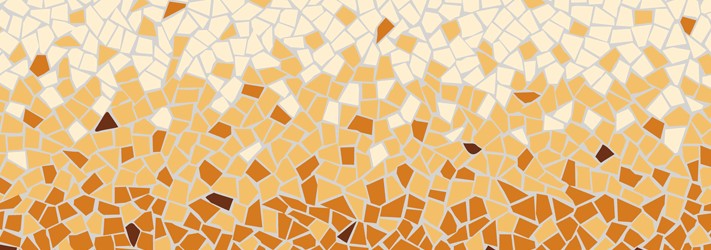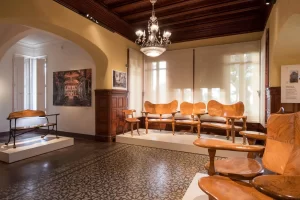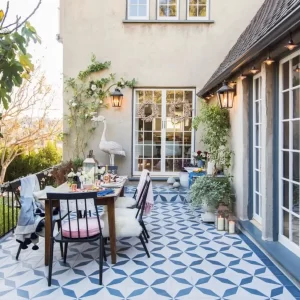Trencadís is one of the most well-known construction techniques of Catalan modernism. In this article, we explain what it consists of, provide examples of buildings that use it, and where to buy the material.
What is the trencadís technique?
The term trencadís is a translation from Catalan. The most accurate Spanish translation would be “fragile,” and it refers to a type of encaustic cement tiles made with pieces of tiles that have been cemented. The result is a floor, wall, facade, or sculpture with a different and characteristic effect.
This construction technique was primarily used for ornamental purposes and is part of Catalan modernist architecture. However, it should also be noted that in the Valencian Community, several buildings can be found using this technique.
Buildings where trencadís can be found
Trencadís is an invention of the great architect Antoni Gaudí, although it is true that it had been experimented with before.
It was first used between 1883 and 1887. It is important to note that, subsequently, it has been adopted by other architects and in other territories. Therefore, today there are civil, religious, and other types of buildings, not only modernist ones, that include it.
In any case, there is an agreement that it is an eminently Mediterranean technique. The main chronological difference is that in the beginning, disposable hydraulic ceramic remains were used, such as plate fragments. However, today this technique is much more refined, and new technologies are used to achieve more attractive visual effects.
Güell Estate
The Güell Estate and Park, located in the Pedralbes neighbourhood of Barcelona, was one of Gaudí's first works. The pavilions were built between 1883 and 1887. This technique can be seen in the pavilion towers. It was the first time that this philosophy was used with a certain stylistic coherence.
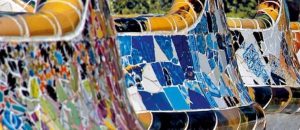
La Pedrera
This is one of Gaudí's most famous buildings, although it was not without controversy. The name La Pedrera was originally a nickname, and it was built between 1906 and 1912. Trencadís was used for the towers of this house, located in the Eixample district of Barcelona.
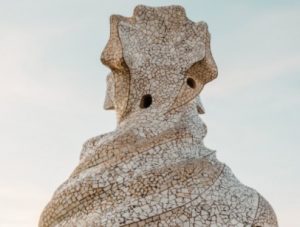
Today they are perfectly preserved and crown the building. We can see, therefore, that there is a chronological coherence in Gaudí's use of this technique in several buildings and periods.
Park Güell
Park Güell is one of Barcelona's main tourist attractions, although it was originally conceived as an urbanization, built between 1900 and 1914. The iconic dragon is covered with trencadís, as well as in the hypostyle hall or in the benches that allow a view of the city. It is probably one of Gaudí's works where we find this constructive element the most.
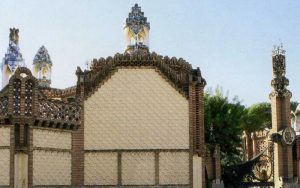
City of Arts and Sciences of Valencia
Santiago Calatrava is the architect today who has done the most to introduce the concept of trencadís into his works.
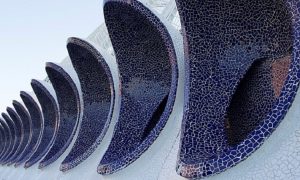
Although it has its concept, in many ways, it is inspired by the architect A. Gaudí and other modernist architects. Thus, the monumental building of the City of Arts and Sciences of Valencia has several elements of this type.
Adán Martín Auditorium in Tenerife
The Adán Martín Auditorium in Tenerife is another masterpiece of Santiago Calatrava. It was built between 1997 and 2003, and we can see broken fragments on the exterior facade. Its location and presence are examples of a clear postmodern concept. The idea is to give a lively image to the building, which can be achieved thanks to the white trencadís pieces. This is one of the examples of postmodern architecture.
Mosaics Torra is a supplier of encaustic cement tiless
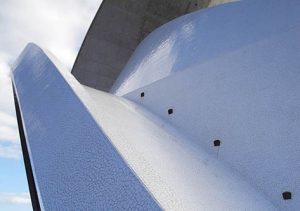
At Mosaics Torra, we manufacture all kinds of cement tiles and mosaics, inspired by the works of Antoni Gaudí. For example, the trencadís encaustic cement tiles is inspired by this philosophy. The difference is that, if you wish, you can use it indoors.
Our expertise as manufacturers, marketers, and restorers of public buildings precedes us. In the 1990s, the manufacture of cement tiles became fashionable again, thus revaluing modernist construction techniques. We have been and continue to be leaders in the sector, so we have contributed to the restoration of Park Güell, among other actions. We have public and private clients.
For all these reasons, if you are looking for a trusted supplier of tiles and hydraulic cemnet tiles we encourage you to contact us. You will find what you are looking for and will be able to give a new touch to your space.

